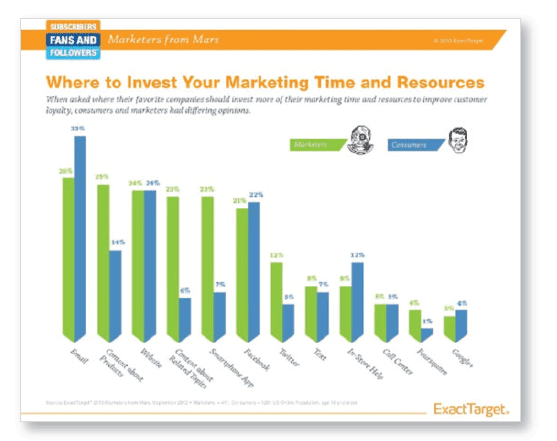Content That Sells

Content marketing is the digital tactic du jour among the new media elite, but it's not enough just to produce content. Today's savviest digital enterprises must relate to their audience with content that motivates, involves, captivates and excites the user, because that's the content that drives results.
So how are the top enterprises using content marketing today? What methods do they employ for developing, distributing and analyzing their content-related performance? This month's Website Magazine feature answers these important questions and others to help set your enterprise on a profitable course down the content marketing road.
CONTENT MARKETING STATISTICS UNLEASHED
Content marketing has captured the attention of the digerati for two reasons. Primarily, it is accessible from a cost and development perspective. Secondly, it flat out works. When marketers receive a return on their content investment, they're going to keep at it. Today, enterprises are aggressively testing different tactics, distributing content to more destinations and spending money to make it happen.
According to a recent study on content marketing from MarketingProfs and the Content Marketing Institute, there is some uncertainty in relation to whether tactics are being used effectively, but organizations are seemingly unafraid to engage in the pursuit. The "B2B Content Marketing: 2013 Benchmarks, Budgets, and Trends-North America" report revealed that, on average, B2B content marketers are spending 33 percent of their marketing budgets on content marketing, up from 26 percent last year. What's more, 54 percent plan to increase content marketing spending in 2013. If ever there were a time to get started, it's now.
ENHANCING THE DEFINITION OF CONTENT MARKETING
Depending on your vantage point, you might think digital marketers have all gone content crazy. They are sometimes wildly developing and distributing their content, but too few have any formal strategy, a serious problem for brands in a far more crowded and demanding environment. This is a rather serious problem for all brands.
Perhaps the problem is that there's no single definition of the practice. There's a difference between content marketing and content strategy (some might argue that content development also differs). The result of all this confusion is an absolute content mess. If you're serious about getting started with content marketing, it's essential to have a formal content strategy in place.
The strategic element of content demands attention to objectives, audience personas and analysis. Whereas the marketing of content is how content is curated and distributed and how the objective is executed. Both strategy and marketing, as well as content development, require involvement with a variety of tools, channels and techniques, many of which are quickly proving necessary in order to attract, acquire and engage both current and potential customers and drive profitable customer interactions.
The good news? When done well, content marketing works.
"When it comes to content marketing it's important to keep in mind the end goal for your content marketing strategy," said Alexis Karlin of Percussion Software. "For instance we track the success of content marketing through inbound lead generation, bounce rate, marketing qualified leads, click-through rate, and new visits. This is tracked on a daily basis, measured against content themes monthly and reviewed quarterly. Using this data helps us understand where we need to add more content, produce more email campaigns and reach out for guest posts."
With a better (or at least enhanced) definition of content marketing, and some confidence that the right strategy will yield positive results, the next phase should be to consider what content marketing means to your enterprise specifically and that starts with knowing your audience.
CONTENT MARKETING FOR THE AUDIENCE
The practice of creating a user persona of an ideal customer is the perfect place to start. This persona includes age and gender of course, but that information alone is too limiting. It is also important to know how often users will purchase, their average spend (or income) and, most importantly, how long that prospective customer will take to convert into a paying customer once in the sales funnel. The more you know, the better you will be able to market exclusively to them: check out Website Magazine's guide to developing website audience personas.
Strangely, it's not enough to understand the marketing content's intended audience. It's also important to consider how a marketer's own bias may influence strategy decisions. When assumptions are successfully mitigated, they won't improperly influence the content marketing strategy.
Despite all the big data at our collective disposal, marketer's experiences tend to dictate the conversation, and more often than not, it's just way off base. ExactTarget released a new chapter in their Subscribers, Fans, and Followers series called "Marketers from Mars," which contends that the modern marketer is far ahead of their consumer counterparts. For example, 90 percent of marketers own smartphones but only 51 percent of consumers do.
There are, of course, certain areas where the two groups think in a similarly. As you can see in the chart on the next page, the differences seem to outweigh the similarities in number and in what they represent. Exact- Target asked both marketers and consumers where brands should be spending their time and effort in order to increase customer loyalty and service and what they found will downright shock you.
Marketers have long believed that the secret to an active Facebook page is the use of related content (e.g. not one promotional update after another). Twenty-three percent of marketers agree, but only 6 percent of consumers thought this was a good idea. Consumers do want more Facebook posts, but mostly, they want to consume information through email and websites. Are you producing content for appropriate users, in the format they are most likely to consume it? If not, you don't know your audience.

THE PHASES OF USER DEMAND FOR CONTENT
Using content to drive awareness, loyalty and, of course, sales is far from a new practice. Online marketers have always used content. What has changed is when and how content is used within the buying cycle.
In essence, enterprises are finally realizing the potential of their content as a means to influence users and drive response across channels. Consumers are driving the demand. When you know where users are in their own personalized buying experience, the type of content you develop begins to play an important role.
One of the best practices that content marketers can engage in is to align the type of content they are creating to where users are within their individual buying cycle. As they begin the often-lengthy purchase experience, marketers will need to address awareness, consideration and finally, the actual decisions. Often however, it's more common to address just one of these important phases, typically the one closest to the actual conversion. There's a better way.
For example, in an awareness phase, brands can address the business problem, detail the requirements and highlight the objectives of such a solution within their content. In the active consideration phase, content should help users explore their actual options, research solutions and determine an overall strategy. Finally, as consumers reach the decision phase, businesses should publish content related to specific products and vendors, help their users build short lists, assess potential ROI and make the decision.
Different products and services will have different content demands, but the source and type of content matters greatly within each phase. For example, the act of distributing quality content through online communities can have strong SEO implications, which is useful in the awareness phase. In the consideration phase, email newsletters and whitepapers are valuable. Lastly, demos, free trials and case studies can make a positive impact in the decision phase.
Business-related content of the past tended to focus on promotion of the business. While there is certainly a time and place for that, there are many alternative opportunities. For example, is your content solving an immediate or pressing problem? Is it making something they do or are responsible for easier? The objective is to help them overcome obstacles. Publishing (and distributing) content to do exactly that puts your enterprise on the fast track to marketing success. So why not turn to users for content inspiration?
Remember, we're solving problems and driving action, so content should do the same. To do so, enterprises must understand even more about their users, which is why it's important to survey those users and audience regularly. Website Magazine associate editor Allison Howen recently put together a list of digital platforms for obtaining customer feedback, which is a terrific starting point for just this sort of effort.
Of course, it doesn't have to all be so strategic. You could opt to fly by the seat of your virtual pants and leverage the vast amount of real-time data to create content in hopes it will drive response. Bitly's recent public release of its new social data API, provides one such good opportunity.
The amount of information that is shortened, shared and ultimately clicked by Web users is absolutely staggering. With the new bitly API, it's possible to access the content that is actively being shared across all of the social networks. The API provides three types of functionality to access, including real-time search, attention spikes and metadata about the URLs being shared.
So how can this information be used for content marketing? Well, when you know what's trending, and monitoring social data in real time for attention spikes, the choices made in terms of what content you'll publish will naturally be better. This means you'll guess wrong less often, because those decisions are rooted in empirical evidence (data).
THE DISTRIBUTION OF CONTENT
When most marketers think of content marketing, they think primarily of where their content will be distributed. They're not wrong to do so, but hopefully, they are also thinking of the content strategy, the audience that will consume it, and have the content ready to send into the channels that will drive new and repeat visits to their digital property.
According to Percussion's Karlin, “we use tools such DivvyHQ, InboundWriter and Google Alerts. We integrate DivvyHQ with our CMS, Percussion CM1. Through a dashboard widget, we're able to keep track of our content through an easy-to-use editorial calendar. To help with optimizing our content for search engine's, such as Google we use InboundWriter. This tool helps us pick a specific keyword for our content and optimize each post for those keywords. And to come up with new ideas to post about we use Google alerts to notify us on the use of specific-industry keywords. We can write a response post, generate a white paper from it or even comment on the new post.”
Not all enterprises will be drawn to using third-party tools and services for the sake of distribution; it's not uncommon in fact to let users play a role in it as well. "We use the AddThis widget in order to get our blogs and content shared across a wide range of social media, and we measure the viral level using AddThis's reporting features," said Ian Aronovich, President and Co-Founder of GovernmentAuctions.org. "We also have Awardable.com run giveaway events for us, which helps us increase and encourage social interactions via sharing. Since we started doing that, we've seen a huge increase in the buzz we are able to generate via users and readers of our content, which over time translates into more customers.”
More often than not, unfortunately, brands involved with content marketing have a far too narrow scope on the channels and methods by which content can be distributed. "One key we've found to online content is to make use of all your channels (blogs, email, social) as well as to blend in appropriate PR tactics, like news releases," said Doyle Albee, President of Metzger Associates. "For example, we frequently get both online and traditional media coverage for a client in IT security by offering a point-of-view on a current event in the industry, rather than hoping reporters and editors see our blog post. We will issue a news release (in addition to the other items noted, above) indicating we're available for comment. This generates not only coverage, but also offers for guest blog posts, contributed articles, etc."
Yet it's the email channel that for most marketers will yield the best results. According to Andrew Knibbe, CMO at Flippa, “Email has been our biggest driver to the site, so we spend a fair amount of time making sure we send timely, relevant emails with optimal content and subject lines. This relates to both our weekly newsletter (with site announcement and other content we think our users will love) and to our transactional emails (bid notifications, prompts, receipts, watch list notifications).”
The most important element of your content marketing efforts, as it relates to distribution, is where users end up once content has been distributed into search engines, through email and within social media networks. That's right, you need to control the user experience and there's no better place to do that on your own property. Users need to be on a business's digital property if the aim is to get them to complete the brand's objective - sales conversions or leads. But what works best?
“We've found that a mix of site announcement, guest posts and round-ups of relevant links from elsewhere keeps our readers coming back to the site and engaging with our content and platform,” said Flippa's Knibbe. “Since our product is fairly niche, our content is aimed at educating our current and future users. With time, this content ranks well in Google, bringing in new users.
“We publish 2-3 blog posts per week, and have increased our newsletter sends to weekly in the last year with very positive results. In the last three months, we have ramped up our marketing efforts, publishing content on other blogs read by our target groups. We also distribute wider announcements to a list of bloggers in our niche, which means our most active users will often read about our product on several channels over a given week.”
CONTENT ANALYTICS IN FOCUS
The analysis of content marketing efforts is also a rather sizable obstacle for brands.
Andy Crestodina, Strategic Director at OrbitMedia and author of "Content Chemistry: An Illustrated Guide to Content Marketing” said the following about how his agency uses online content to drive results: "The trick is to create content with the promotion in mind. Ideally, a single piece of content gets traction in all three major channels: search, social and email.
“The nature of this traffic looks very different when you're measuring the results in Analytics. Social traffic looks a bit chaotic. It's hard to predict. On the other hand, email traffic is very consistent. It looks like a heartbeat on an EKG machine. Search traffic can be very slow to build up, but over time can look like a long slow line or curve upward."
Using traditional metrics, such as unique visitors and page views, time-on-site and bounce rate are reliable metrics to use when analyzing content marketing, but a new crop of solutions has emerged that are designed to provide more meaningful cues as to how these initiatives are really working.
Glam Media, a "vertical" social media company focused on lifestyle, partnered with SaaS analytics company Moat to measure content engagement and effectiveness beyond common measures, such as page views and social shares. With all the current chatter about content marketing, you would think there would be a virtual flood of solutions to help marketers understand how content is performing, but, alas, there really is not.
Glam Content Analytics however, which is powered by Moat, helps digital enterprises determine just how much attention a user is paying to a particular piece of branded content and how that attention benchmarks against other campaigns. As more and more marketers start leveraging content marketing, and distributing brand assets far and wide through the virtual world, content performance (and the solutions being used to understand that data) is definitely going to receive more attention.
In the case of Glam's new content analytics offering, the user's attention is examined through focus-related attributes, such as whether the user is actively scrolling through the content and how much time is spent with the content in the user's active browser window, among other factors. Overall, I think you'll see just how important this will be to those investing anything in the tactic.
CONTENT MARKETING PLAN (MADE SIMPLE)
Content marketing is a valuable part of any business strategy and it comes in many forms. Its implementation, however, remains underutilized. A study by digital marketing company IMN found that 78 percent of companies surveyed placed content marketing as a high or medium-to-high priority yet only 52 percent reported a formal content marketing strategy was in place for every channel of distribution.
There is obviously a sizable disconnection between content marketing ideals and reality however. With so many mediums for promotion and brand building, for content marketing tactics to work they need to be specific. Not only is specificity needed, but so is planning. Without a formal plan, how can businesses ever market their products or services in an optimized way?
Despite blogs and websites flooded with advice for content marketing and numerous agencies and consultancy groups that can handle it on behalf of the clients, companies are still awash in buzz word philosophy that is not grounded in actual practice. Website Magazine has put together some information for those considering a content marketing initiative in Content Marketing Plans Made Simple, a resource containing details on the best course of action for planning the entire content marketing experience - from audience research, to content production and analysis.
The power of content marketing makes it irresistible to brands both large and small. When approached with a thorough strategy, with an eye on serving users meaningful information and using appropriate performance indicators to measure success, your content will sell.










